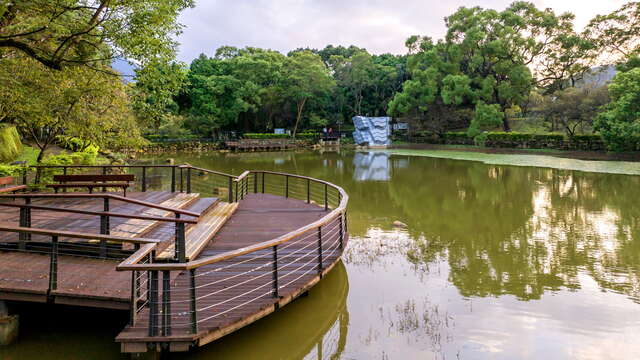Jiaoban Mountain Villa Introduction
Jiao Ban Mountain Resort Park is located along the North Cross-Island Highway, blending history, culture, and natural ecology. The park includes unique attractions such as the Wartime Tunnel, Jiao Ban Mountain Guesthouse, Plum Garden, and the Camphor Storage Office. At the end of 2024, after structural repairs, landscape optimization, and improvements to recreational facilities, modern technologies and art displays will be introduced, with "Traveling Jiao Ban Mountain" as the first exhibition after renovation. This aims to reinterpret the history and natural beauty of Jiao Ban Mountain through the perspectives of travelers and artists who have visited the area. The Wartime Tunnel was built in 1963, originally for the purpose of wartime command and shelter for the leaders. The tunnel goes 20 meters underground and stretches 100 meters long, featuring interactive 3D murals that recreate historical military contexts and slogans, making it a popular educational and entertaining attraction. Following the emergency escape path leads to the Jiao Ban Mountain Guesthouse, which exhibits the theme "Generalissimo's Travelogue," emphasizing the story of Chiang Kai-shek and Soong Meiling's visit to Jiao Ban Mountain for tourism, as well as Ms. Soong's journey of learning painting. Historical photographs are displayed on-site, such as images of the Chiang couple in the Bamboo Pavilion at Jiao Ban Mountain and a group photo on the Jiao Ban Mountain suspension bridge, connecting travel and aesthetics to offer a multifaceted understanding of their lives, enhanced by new media interactive art creations. Stepping outside the guesthouse, visitors can enjoy the view of the Dahan River and Nake Mountain from the Memorial Pavilion, where the expansive scenery reflects Generalissimo's nostalgia for his hometown, Xikou in Zhejiang. The Sculpture Park integrates installation art with the natural environment, featuring trees such as pines, cypress, plums, and bamboo. During the plum blossom season, it attracts visitors to enjoy plum viewing, tea tasting, and participate in outdoor activities, experiencing the lively atmosphere of the blooming season. The Camphor Storage Office is the only remaining Japanese-style camphor hall in Taiwan, which formerly served as a hub for camphor concentration and transportation, showcasing the history of the camphor industry and its refining process. The North Entrance Plaza retains traces of the original architecture, combining landscape paving, tea facilities, and relaxation platforms to deepen cultural experiences. The nearby ecological pond is surrounded by wooden walkways and is planted with diverse aquatic plants such as irises and water lilies, as well as various plants like golden-haired azaleas and pittosporum, creating an environment favored by tree frogs and fireflies. To promote nighttime tourism, outdoor sculptures in the park will be illuminated, creating a tranquil atmosphere where nature and light intertwine. The park is now open until 8 PM, making it a new spot for the public to stroll and admire art sculptures under the night sky.
































